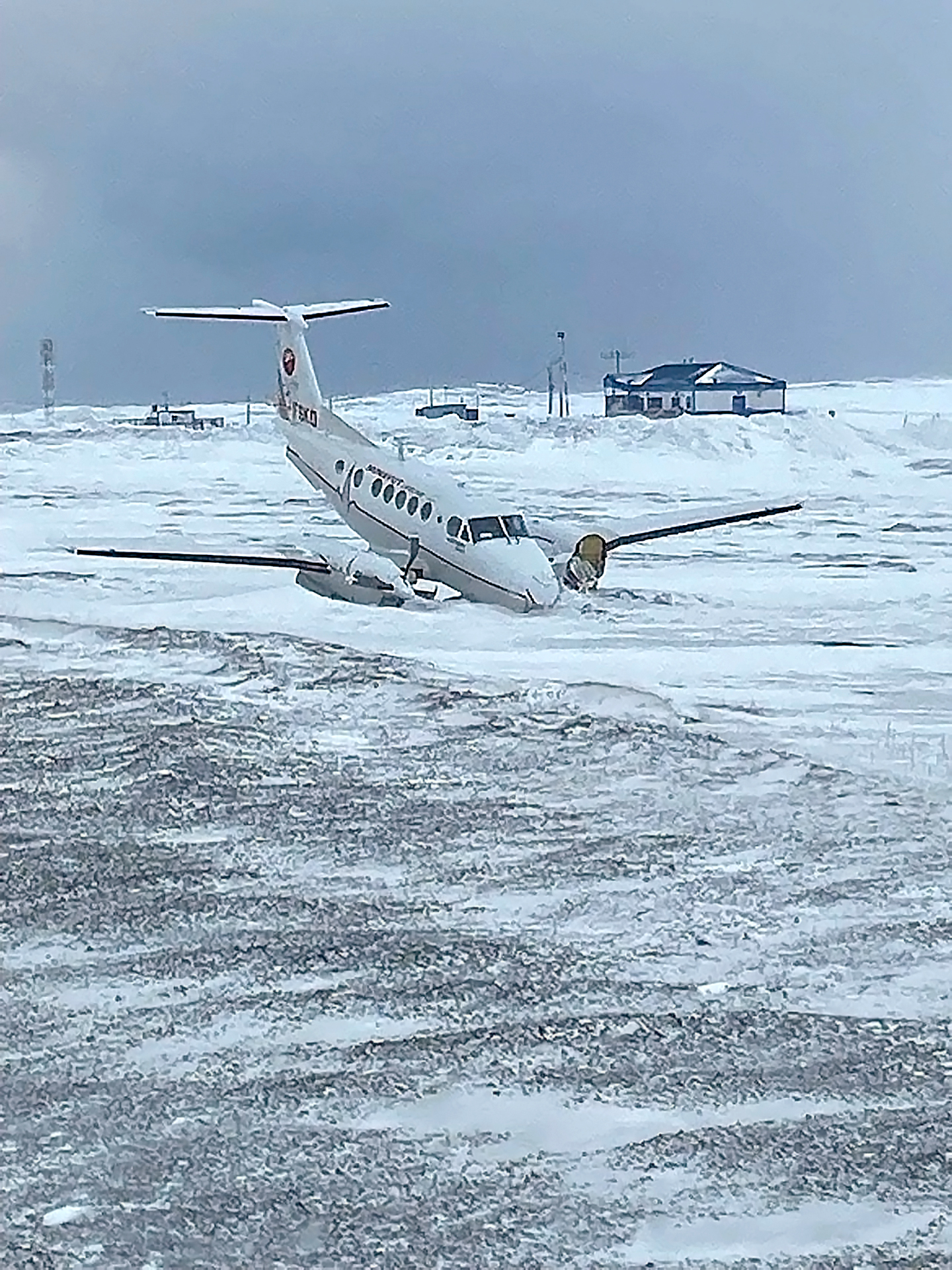Lateral runway excursion
Keewatin Air LP
Beechcraft King Air B200, C-FSKO
Sanikiluaq Airport, Nunavut
The occurrence
On , a Beechcraft King Air BE20 aircraft operated by Keewatin Air was conducting flight KEW204 from Winnipeg, MB (CYWG) to Sanikiluaq, NU (CYSK) with 2 passengers and 2 crew members on board. While conducting a missed approach on Runway 29, the aircraft deviated from its intended path on the ground and went off the side of the runway. One of the passengers sustained minor injuries and the aircraft sustained substantial damage.
Media materials
Investigation information
Download high-resolution photos from the TSB Flickr page.
Class of investigation
This is a class 3 investigation. These investigations analyze a small number of safety issues, and may result in recommendations. Class 3 investigations are generally completed within 450 days. For more information, see the Policy on Occurrence Classification.
TSB investigation process
There are 3 phases to a TSB investigation
- Field phase: a team of investigators examines the occurrence site and wreckage, interviews witnesses and collects pertinent information.
- Examination and analysis phase: the TSB reviews pertinent records, tests components of the wreckage in the lab, determines the sequence of events and identifies safety deficiencies. When safety deficiencies are suspected or confirmed, the TSB advises the appropriate authority without waiting until publication of the final report.
- Report phase: a confidential draft report is approved by the Board and sent to persons and corporations who are directly concerned by the report. They then have the opportunity to dispute or correct information they believe to be incorrect. The Board considers all representations before approving the final report, which is subsequently released to the public.
For more information, see our Investigation process page.
The TSB is an independent agency that investigates air, marine, pipeline, and rail transportation occurrences. Its sole aim is the advancement of transportation safety. It is not the function of the Board to assign fault or determine civil or criminal liability.
